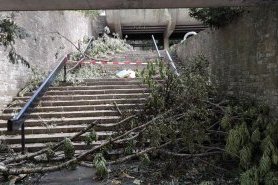
I visited this WHS in July 2023. We were staying in Geneva with a cousin who was working at CERN, and I had heard about La Chaux-de-Fonds being famous as the place of origin for Switzerland's rich watch-making history, so we planned an entire daytrip around going out to the town in the North. I'm sad to say that it is dubious whether all of the effort was worth it.
The main goal of our trip was to see the watch-making museum. According to the Internet it was to be open and operating at the hours we were visiting. However, after multiple hours of travel getting out to this town and navigating on foot from the train station to the museum – we found the museum closed. Apparently, the town had endured a huge windstorm a couple of days before which had knocked down trees and branches all over the city. There was tape covering one stairway that lead to the museum, but nothing offically blocking off the ways of accessing it. Curiously, there were no signs or anything indicating the museum was properly closed, and we couldn't tell for sure whether it was not operating or we were just looking at the wrong location for an entrance. We encountered other confused groups of tourists looking to get into the museum, and after twenty minutes of wandering around or so we finally gave up. No one had written anything online indicating that the museum was temporarily closed.
At …
Keep reading 0 comments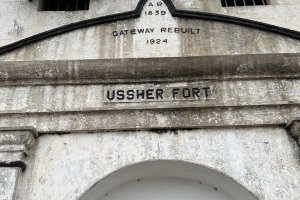
Jamestown and Usshertown are the oldest districts of Accra, the capital city of Ghana. According to Emmanuel, our tour guide slash driver during our visit in Accra in 2023, these towns were the origin of the Accranian people, the fishing people called Ga. Once upon a time, Accra was known as A-ga-ra.
These districts in the Greater Accra Region possess a certain charm that I thought comparable with Melaka, Georgetown, and Ipoh in Malaysia and Little India in Singapore. Just like these Southeast Asian cities, Jamestown and Usher Town were once British colonies. And all of them are strategically located along the coast of the cities – for trade. Today, these cities are vibrant and lively. However, Jamestown and Usshertown possess some stories that continue to haunt the history of humankind: 400 years of inhuman conditions brought upon by the European imperial rules onto the entire continent of Africa.
My knowledge about the Trans-Atlantic Slave Trade is mainly based on popular culture, particularly Hollywood films. Visiting the forts at Jamestown and Usshertown and listening to the stories of Ussher Fort from the perspective of the people whose forefathers were either survived, tortured, or killed by the colonizers were tremendous as much as they were also eye-opening.
Jamestown Fort was not open for tourists at the time of our visit, but its imposing structure is terrifying. Emmanuel told us that the infamous lighthouse was used by the Dutch and the British to properly dock their ships that took …
Keep reading 0 commentsAndrew_Kerr
Historical Lisbon, Global City
Historical Lisbon, Global City (Removed from tentative list)
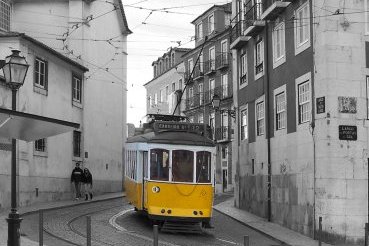
I've been to Lisbon a couple of times and enjoyed both visits. There's a lot see in the city that I once saw described as looking more like the Americas than Europe. I thought that was a fair comment with the huge suspension bridge spanning the Tagus river, the statue of Christ looking down at the city and the steep hills and trams that are all reminiscent of famous places in the New World.But this is a European city steeped in history, the most westerly city on the mainland of Europe in fact. The old town incorporates the Alfama district, one of the oldest in the city where Fado music can be heard in the bars and cafes, the 12th century cathedral resides and the steep narrow streets where the famous tram number 28 trundles by (see picture) not forgetting the 11th century castle that sits at the top of the hill and where the views of the city are spectacular. The old town is largely in the upper area and there are a couple of novel ways to get there, funicular Gloria is one way and the Elevador Santa Justa (Santa Justa lift) is another and once at the top you can ascend some steps to a viewing platform for an amazing view of the lower city.Much of the lower city was destroyed in 1755 when an earthquake devastated the area. The lower area today has wonderful large squares, an impressive railway station, the Rosario, built in the Neo …
Keep reading 0 comments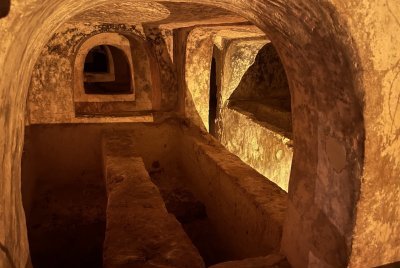
The catacombs on Malta are surprisingly numerous and the highest concentration can be found in Rabat where you find four that are accessible to visitors. I visited two of them: The largest is the catacomb of St. Paul and it is surprising how large they are: After visiting a decent introductory museum you can enter the catacombs via twenty or more separate (modern) entrances, each leading to a seperat underground complex of various sizes. They are impressive but since there is very little decoration left after a while they resemble each other. But in some you can find inscriptions or carvings that give hints about the roman, Christian or Jewish religion of their owners. For a second visit I chose the St. Agatha catacombs that you can only visit with a short tour because they had several murals left. At the start you enter a large chamber with colorful murals but they are of later, medieval origin and have been vandalized by the Islamic invaders of the Island. More interesting though more modest were to paintings from the 4th century.
When you are there it is certainly worth to visit at least one of the catacombs but they are modest compared to the already inscribed and more impressive complexes of Rome, Naples and Syracus.
A combination with the old town of Mdina seems possible but I am not in favor of combining two weak proposals: There is no connection between the baroque citadel on the hill and the …
Keep reading 0 comments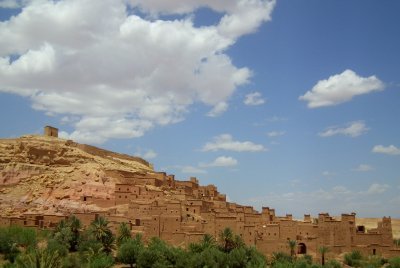
I'm probably being overly harsh giving it 3.5 stars because it was enjoyable and I've never been anywhere like it before or after. I guess the rating I gave it reflects the workmanship/artistic content of the site, there isn't much to be fair. It's a fortified village made out of mud in the high Atlas mountains of southern Morocco which means function over anything else.Possibly the best part of my visit was getting there on the amazing highway that zig zags and snakes through the mountains with fantastic views around every bend.Once at the village itself, an hour was plenty of time to take in the layout, the construction, explore the myriad alleyways and avoid all the souvenir sellers and snake charmers.
Keep reading 0 comments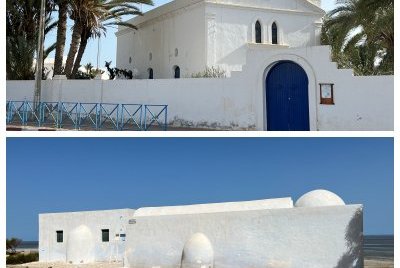
This is the first review of a visit to the Djerba WHS after its inscription. The site has received horrible reviews and an exceptionally low rating from our community, but I thought maybe it would all make more sense with the help of an OUV-frame. It’s about a dispersed but homogenous settlement and land-use pattern, characterized for example (but not limited to) self-sufficient rural communities with their own water supply, palm groves and tiny mosques. That’s why it includes 22 rather featureless and abandoned neighbourhood mosques.
For my visit, I tried to make a representative pick from the locations without having to rent a car. In the morning, I visited 4 components in and north of the capital city Houmt Souk. The medina of Houmt Souk is not a rural settlement, of course, but the trade town where everything ended up. Included is just a small zone (the old funduqs, the covered market, the Mosque of the Turks and St. Joseph Church; but not Borj El Ghazi Mustapha). It feels like a smaller version of the Medina of Tunis, and even in the early morning, it is all geared up to receive the French and German beach tourists. I then walked on to another component, the Church of St. Nicholas. A sign on the door says that it only opens on Thursdays from 10-13. The sizeable church (upper photo) can only be seen from the sidewalk across the street.
My next goal was the Mosque of Sidi …
Keep reading 0 comments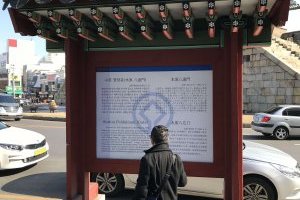
Seoul is the most popular destination for many in South Korea. My colleague and I asked our Korean friend to take us somewhere else. We did not want to be entangled with several tourists doing the same sightseeing in popular Seoul destinations. So our friend brought us to Suwon, some 35 km south of Seoul, to visit the infamous Hwaseong Fortress.
Located in Suwon, the nearest city to the south of Seoul, Hwaseong Fortress is a fortification built between 1794 and 1796. Like the other heritage sites in South Korea, it was constructed by another powerful figure belonging to the Joseon dynasty: King Jeongjo, to commemorate and use as the final resting place of his father, Prince Sado.
The wall is infamous because of Sado, who was executed by his father, King Yeongjo, after failing to obey a command to commit suicide. Our friend noted that Sado was asked to commit suicide after he threatened to kill the son of the highest official (the Royal Consort Yeong) closest to his father Yeongjo. In the summer of 1762, Sado argued with this official. Soon, rumors about Sado trying to enter the upper court to outwit Yeongjo spread like wildfire. However, the court rules indicate that the emperor/king could not kill a direct heir with his own hands. With this, Sado was ordered to climb into a large wooden rice chest. But according to the same friend, some historians claim that Sado died due to mental illness. However, in the …
Keep reading 0 comments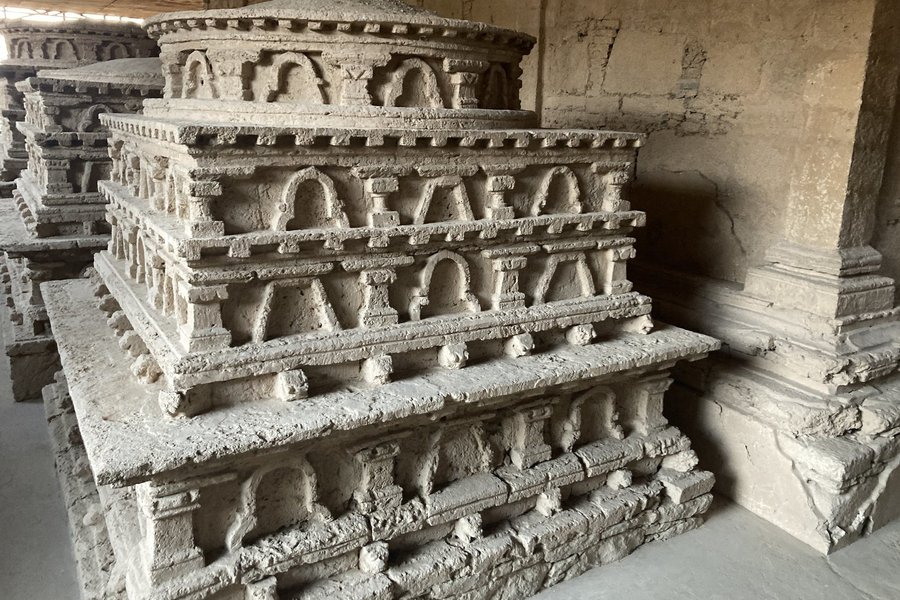
I visited Taxila from Islamabad a few days ago. I would recommend the trip to anyone who is spending more than a few days in Islamabad, but I did much prefer Makli and the Mughal sites in Lahore (I haven't visited Rohtas Fort, Moenjodaro, or Takht-i-Bahi). The positives of visiting Taxila are the ease of getting here, the large number of sites, and how unique it is to see ancient Buddhist artifacts in Pakistan. The negatives were the visible degradation, the lack of helpful signage to understand what you are seeing, and the too persistent guides.
Positives:
The museum, not technically one of the UNESCO sites, is where you should start and is one of the nicer museums I've been to in Pakistan. Taxila is unique for the multitude of different cultures, peoples, and religions that coexisted and succeeded each other. You will hear about, if not really understand that you're seeing evidence of, Greek paganism, Jains, Zoroastrians, and Christians, in addition to the Greco-Buddhist art. If you have visited the temple of the tooth in Kandy, you will be pleased to see that the Thai government has sponsored an exhibit here where two other of Buddha's teeth supposedly are. I found the Greek artistic influences on the Buddhas and scenes of worshippers fascinating. You can see evidence of this influence in the Corinthian columns, hair swirls, and the style of the togas. Some of the scenes in relief are preserved in great detail, but it would have …
Keep reading 0 comments
As a resident of Germany, I decided to grant myself this check only after I made it to all 3 German components. And that day is finally here! Here is a collection of my experiences and thoughts:
Baden-Baden: I got here the Spring after inscription and we had absolutely perfect weather with the first flowers of Spring everywhere. Unfortunately the historical spa house was closed for renovations, but the other inscribes buildings around the river were open and I found the whole setting very pleasant. During our stay we walked along the river to the Lichtental monastery, which made for a great daytime experience. On another evening we took the Merkurbergbahn up for the view and watched the sunset. It was a lovely and very active city, but not too big.
Bad Ems: We went here last year right as Autumn was starting and were surprised at how small, quiet, and fairly rustic this town is. The surrounding area is quite pretty, there were multiple trails up into the hills I unfortunately didn't have time for. The famous 4-Towered house had only recently burned partially down, so there was a large cordon area filled with burned refuse. Thankfully the UNESCO-inscribed building had not been affected. The park was small but lovely, as were the theater and performance hall accessible for a small fee. Unfortunately, while I found the place very aesthetically pleasing, it was what some people would refer to as a dead/dying town, with many buildings and …
Keep reading 0 commentsCaspar
Knights Fortifications around Harbours of Malta
Knights Fortifications around Harbours of Malta (On tentative list)
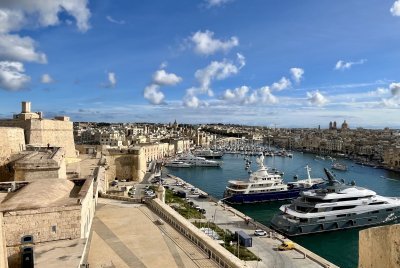
There is no doubt that his should have been part of the Valletta inscription from the start. While the inscribed town is very nice, it is certainly not as spectacular as the former, older seat of the Order of St. John in Rhodos. While there are many must-visits in Valletta, such as the Archeological and the Art Museum, the Grandmasters House, Fort St. Elmo and several churches full of remarkable art, there is no single building in Valletta with real OUV. It is mainly the stunning townscape with the two bays, the fortifications and the many church towers and large domes that make this an unforgettable place. The question, that is not clearly answered in the nomination, is which parts of the metropolis around the two bays should be included into an extended core zone that makes more sense then the current Valletta inscription. Today the large area around the two bays consists of many separate towns but for the visitor it is just one large continuous metropolis. Unfortunately Malta has very little building regulations and a lot of the buildings, especially on the western bay are of deplorable aesthetic quality and if it were situated in central Europe Valletta would have lost its WHS for a long time because of the ruined vistas.
But in the Eastern bay you have the two peninsulas of Birgu and Senglea that are both older then Valletta: Birgu has a wonderful, meandering medieaval townscape that contrasts strongly with the younger city of …
Keep reading 0 comments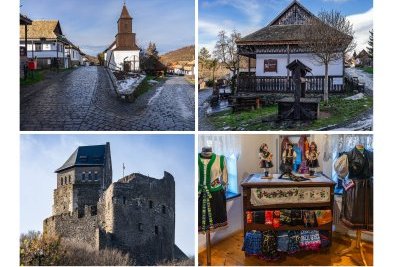
Visited in November of 2024. Something that is 300 years old and deliberately well-preserved always piques my interest, even if it has a reconstructed-for-museum-purposes feel. In any case, Hollókő is very photogenic and pleasant to walk through.
That old village core is literally just a few hundred meters long, with the homogenous nature of construction seen on every step. The signature sight is the town church, dedicated to St Martin, which sits at the fork of the only street in the village, splitting it into a main artery and an auxiliary loop. The door was locked, and I did not make extra efforts to find somebody to let me in.
In fact, of various tourist-catering establishments on the central stretch of the main street, most can be visited only between March and October. Just a couple stay open year-round. One is the "main" Village Museum, showcasing the traditional decorations, furniture, houseware, and tools; the other is Guzsalyas, the museum of traditional clothing. Both add a bit of historical context, so they are worth a look. (On a semi-related note, only one place was open for refreshments on that late-November morning - a pretty pastry shop called Kalácsos Pékség; several locals came in for their bread and pastry purchases while I had coffee and a fantastic local specialty whose name I did not record in its cozy dining room.)
The theme continued with craftsmen - only the leather workshop was operating on the day - but when I …
Keep reading 0 comments
This site includes two of my favorite Maya ruins of Yaxchilan and Bonampak -- two very unique sites among the many Maya ruins I have visited.
Yaxchilan
You reach the site by a 45 minute boat ride down the Usumacinta River, which is the border between Mexico and Guatemala here, and kind of a fun experience by itself. Once you arrive at Yaxchilan, you enter the site proper through the small Labyrinth building. Moss-covered stones are everywhere, contributing to the jungle atmosphere of these ruins. The Great Plaza has a large number of structures, ball courts, and stelae. The stelae still have very visible hieroglyphics on them. Stele 11 is a particularly noteworthy one. It's considered one of the best examples of sculptural monuments, carved during the reign of King Bird Jaguar IV (752-772 AD), it now rests on the ground in the Great Plaza, but it survived an earlier failed attempt to move it to Mexico City. There are several door lintels that also show fantastic hieroglyphic details. There is even some pigment remaining in spots, but if that gets you excited, wait until you get to Bonampak. There is so much more than the Great Plaza -- there's a huge staircase leading to the Great Acropolis and Structure 33 with its elaborate comb top. And another Small Acropolis even further up, as well as additional buildings and trails you can explore.
You'll probably come as part of a group tour (I did). Mine did not …
Keep reading 0 comments
Wow, I can't believe this site hasn't had a new review in nearly seven years! However, it's not as if this 1,000+ year old medina has changed much in such a relatively short amount of time. The existing reviews sum up the medina well so in relating my February 2025 experience I won't repeat what has already been said. Do know, however, that the residents of the medina choose to take a day of rest on Fridays, so the streets are significantly less busy that day of the week, and many of the shops are closed.
If you've been to traditional Arab souks before (like the Grand Bazaar in Türkiye, or the souks of Israel or Oman) then you have an idea of what to expect here. Tons of small shops crammed together on narrow streets (often selling similar items) with lots of people and tons of opportunities to haggle. I adore markets like this (I've visited a decent amount) but the Fez medina brings it to a new level by increasing the scale to massive proportions–as others have said, this place is an absolute labyrinth that you can spend hours wandering around in. It's incredibly fun!
If you enjoy:
- The thrill of bustling, very narrow streets
- The energy of tons of people around all the time
- Spending time visiting many shops to haggle effectively
then you will love the Fez Medina. (I, for one, do love all of those …
Keep reading 0 comments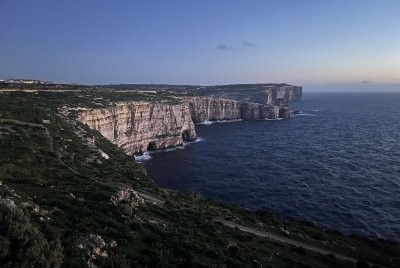
Beside the extension of Valletta, that should have been inscribed decades ago, the Coastal Cliffs are certainly the most interesting tentative site of Malta but, as Ralf writes, it needs more precision. Nonetheless, about half of the coast of the two main islands consists of very impressive high cliffs reaching up to 130m above sea level, mainly along the southern coast. These huge cliffs are impressive from every angel: from the boat, from the plane or from various viewpoints and they contribute a lot the Malta’s history as an island fortress. The high cliffs extend often for kilometers and seems hard and undestructable but at their bottom you find everywhere seacaves of various sizes that show that the unrelenting sea over time dissolves even this hard limestone.
The cliffs are not as varied as the inscribed Jurassic coast in southern England but they are equally impressive. Here some of the best places we found: Il-Ħnejja with the blue Grotto. Fantastic is a little hike around Dingli cliff view point with bronze age remains and views in all directions! On Gozo we had unforgettable views from the Ta cenc Cliffs sunset point and from the Cliffs in the extrem NW, especially for sun set.
The nomination of Qawra should really be part of this nomination since it is one of the most spectacular spots of Gozo's coast line. We found spontaneously a man in a boat who took as from the inland sea trough the small opening out on …
Keep reading 0 comments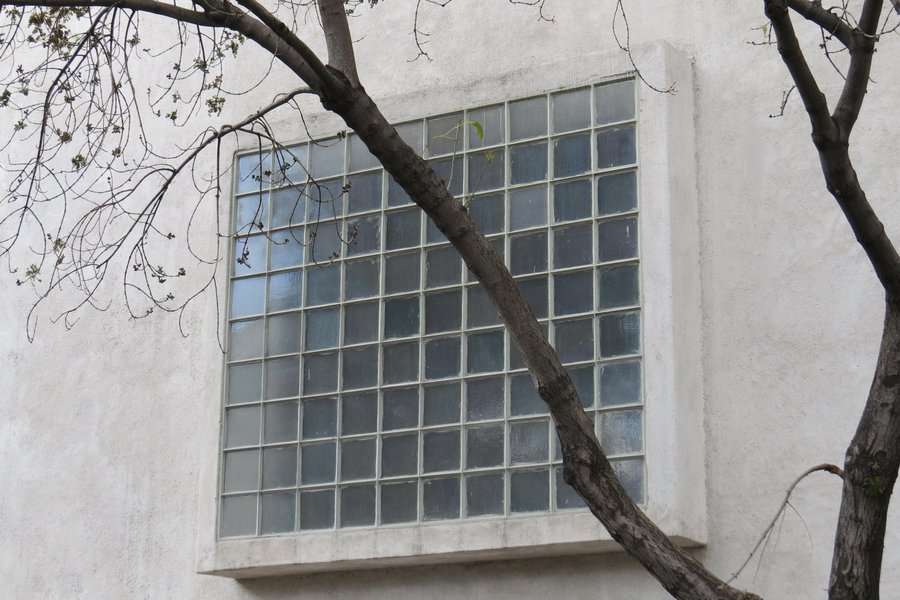
Had the chance to visit this site many years ago and was disappointed.
A much better bet is to do a free, self guided walking tour of Barragan's early Tapatia works in Guadalajara.
It takes you on an approximately two hour walk around the Colonia Americana where you can see his evolving style.
You can visit the Gonzalez Luna (Jesuit University) House, the Casa Cristo House and the Casa Franco for free..
You can find this tour by searching for: "Revisiones de Guadalajara".
Keep reading 0 comments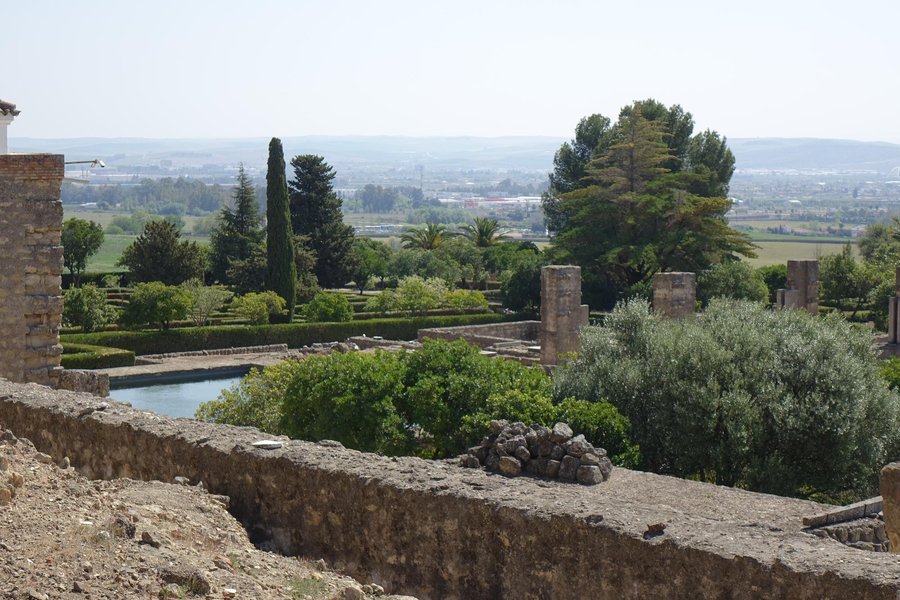
Well, unfortunately I missed the short window to visit the salon rico, so I won't be adding much new to the fray.
This is a rather polarizing site, with some ultimately disregarding it, while others give it a passing score.
Now that I've visited I understand why. The site itself is poorly preserved, and as pointed out there are some rather terrible past reconstructions standing in the park.
At the same time however, the site has, I think, a lot of unfulfilled potential.
First thing we have to remember is that the city is from the late 10th century. Its state of conservation is not that bad once you take into account its age.
Second thing, people romanticize moorish architecture. For all its wonderful decoration the architecture itself is rather pedestrian and simple. Almost all buildings in the style are basically reinterpretations of relatively short hypostyle rooms with wooden ceilings. This means they age notoriously bad and make for very boring ruins. So walking through Medina azahara is rather...unimpressive.
The good part about this is that technically the museum has the decoration, it's just mostly sitting in boxes. And the plan (mor on "the plan later) is to reinstate much of it.
I honestly think that just giving the visitor a rough idea of how the buildings looked in situ (perhaps a visual aid, or well differentiated reconstruction) would improve the experience a lot.
Now the issue is that Medina azahara is …
Keep reading 0 comments
We visited this Site in February 2025. We did it whith an organised tour and booked it at home via a tarvel agency in connection with a Senegalese partner agency.
Several tour agencies in Saint Louis organise daily tours to Djoudj Reserve. The trip usually takes half a day. We started at 07 00 am and finished around 14 00 p.m. But you have to consider that the boat in Djoudi wait till the boat is full (ore almost) with tourists before it starts.
The National Park is around 60 km from Saint Louis town (40 km is a good asphalted road, while the rest is on dirt, local roads. It takes about 90 mininutes.
When you are lucky, as we have been, you can discover some hundreds of pink Flamigos a short time before the entrance to the park.
At the park entrance you have official state prices for everything: guide (obligatory, French and English speaking) boat trip entrance fee per person . To reduce costs a little bit you can skip the boat trip and go for walking in the park but that is not recommended as the boat trip is the most interesting part of park visiting.
The most interesting areas are those near the end of boat trip where the majority of migrating birds are located. View of thousands of pelicans (old and young, which are much darker) herons, different types of egrets, cormorants, king fisher is truelly amazing. The best …
Keep reading 0 comments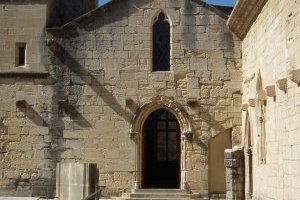
I seem to be bucking the trend here by awarding Poblet 4 stars but I really enjoyed my visit there. It's a very impressive 14th century Cistercian abbey, set among the rolling foothills of the Prades mountains.I usually find an hour is plenty when visiting most cathedrals and abbeys but I happily spent half a day here exploring the various features.Poblet Abbey or to give it its proper name, The Royal Abbey of Santa Maria de Poblet was founded in the 12th century by French Cistercian monks along with 2 other abbeys at Vallbona de les Monges and Santes Creus.Although the building we see today reflects the splendour of the 14th century Gothic abbey, much of it is restored, the building having fallen into disrepair in the 19th century.Of particular interest is the altar, dating from 1527, the cloisters and the tombs of the kings and queens of Aragon. It's also possible to walk on part of the roof (see picture) which I enjoyed immensely.
Keep reading 0 comments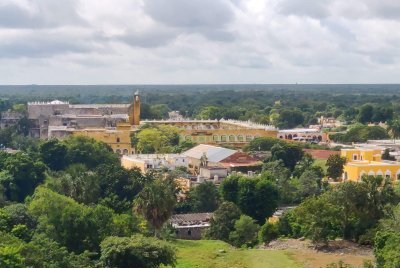
Izamal is worth a visit for two primary reasons: Kinich Kak Moo -- ruins of an enormous Maya pyramid, and the convent of San Antonio de Padua. It's otherwise a nice enough small city to stop by, and there are remants of a few other Maya structures scattered through the town center. We drove in, and guided by Google Maps to Kinich Kak Moo, started looking for a parking space. We were soon amazed to discover that the block we were driving around was the huge temple itself. It's base measures roughly 200 x 180 meters. It's not a full on pyramid going up from those dimensions now, but there is still a pretty significant temple in the center of the broad raised tableau that you can ascend.
The town's other main attraction, the convent, was finished in 1561. It is built on a terrace that was another former Maya pyramid that was flattened by the Spanish. It's very pleasant to walk around the huge atrium and the chapel is nice, but nothing really that ornate or special. The convent is now painted in the town's signature yellow color.
We also enjoyed walking around the town finding some of the other ruined Maya structures which are simply incorporated into the town. None of the Maya ruins here are anywhere near the caliber of other nearby major sites like Ek Balam, Uxmal, etc. But they are interesting to see for the way they are right in the middle of …
Keep reading 0 comments
Rabat is a solid WHS worth seeing. (I visited in Feb 2025.) It's not the most amazing tourist destination compared to other cities, but it holds its own as a decent spot that I would recommend adding to your trip if you have time. Everything can easily be fit into one day with time to spare.
Some items worth experiencing are:
- The newly-reopened Chellah is fantastic with great signage, beautiful pathways, and a perfect-length audioguide that tours you through the entire thing. The Chellah is a mix between an ancient archeological site (that you can walk right into!), a beautiful garden, and a tour of more recently historical, fully-intact buildings.
- The Kasbah is the biggest attraction of the city and is an excellent little enclosed space that is preserved as an ancient "downtown" area but with modern vendors selling there. (You can also haggle there.)
- Often not talked about, but the Kasbah connects to a beautiful little lane called Rue Bazou filled with terraced white houses that feel very similiar to those in Santorini, Greece.
- The Rue Bazou will dump you out directly next to the Andalusian Gardens which are a treat, if a bit small. Very peaceful, and significantly distinct from the Chellah.
- If you have a little extra time, you won't be at all disappointed by the Rabat Old Market (Souk Tahti) which is akin to a more spacious version of the famous medina found in Fez.
…
Keep reading 0 comments